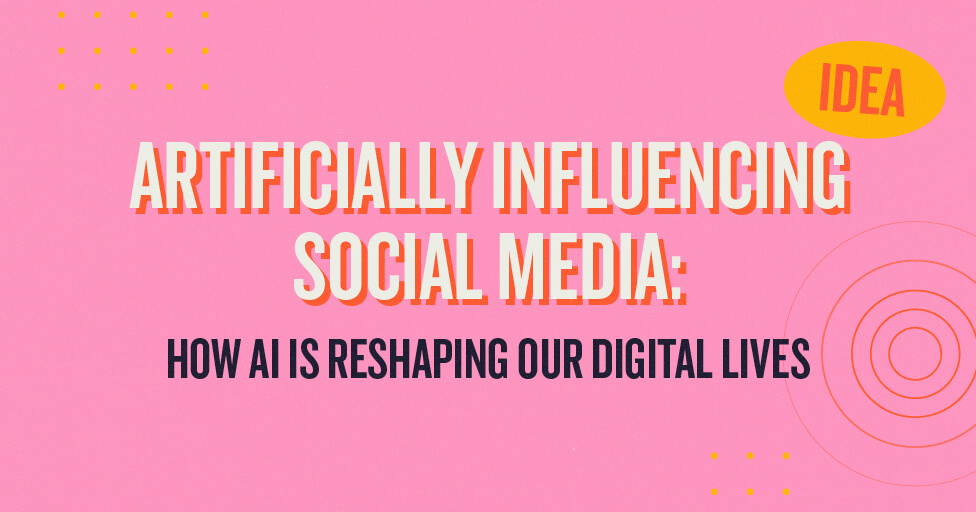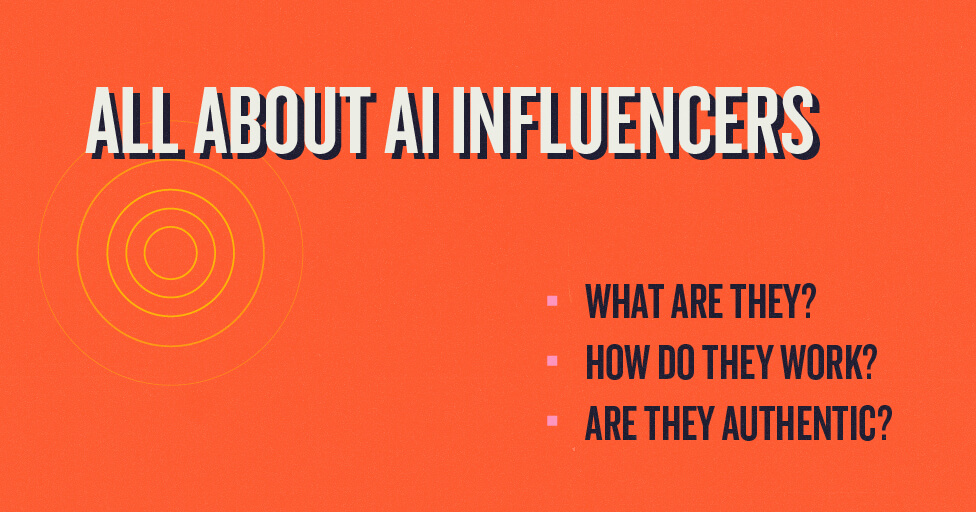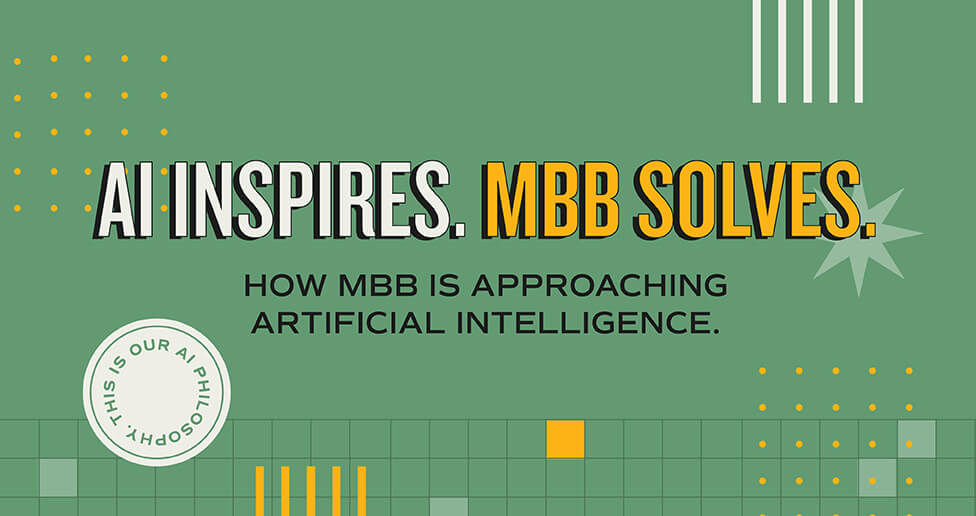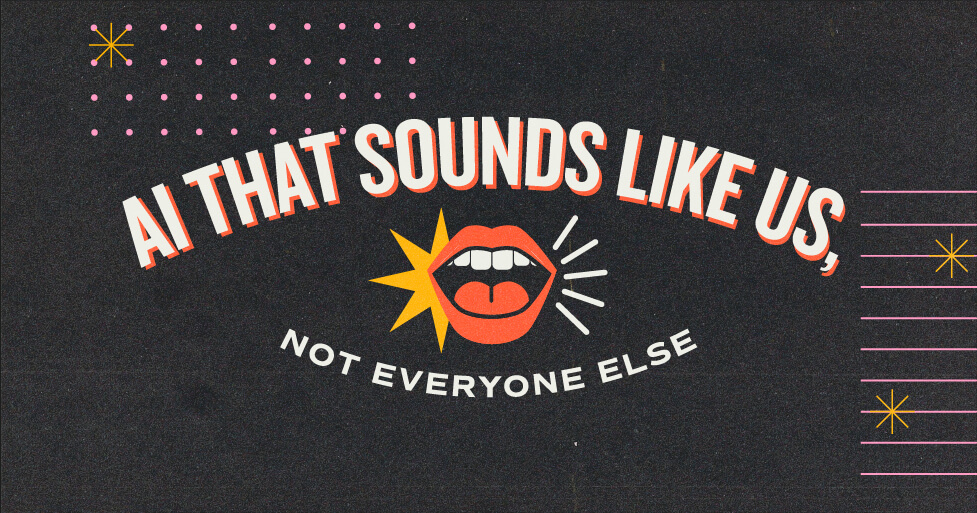
In today’s digital age, artificial intelligence (AI) is so powerful and so realistic, it is infiltrating social media without consumer recognition. So much so that influencer accounts are being AI-generated to look, feel and sound like humans. From creating hyper-realistic, virtual-based influencers to automating content creation, AI is reshaping the way we interact online.
One fascinating example is Shudu Gram, the world’s first AI-powered supermodel and influencer, who made her social media appearance in 2016. Every element of Shudu, from her pictures to her interactions, is made by AI, which begins to blur the lines between the virtual world and the real world.
And this is just the beginning of AI on social media. From influencers and chatbots to tagging and content creation, it can be difficult to wrap your head around all the different ways AI is being used. To better understand it, let’s dive into what AI influencers are and look at the broader impact on the world of social media.

What are AI influencers?
AI influencers use artificial intelligence tools to power and create a presence on social media. Often indistinguishable from real human appearance and behavior, AI influencers can engage with people just the same. Lil Miquela, another notable AI influencer who emerged in 2016, is a good example of this. The 21-year-old robot is based in LA and now has 2.5 million followers (1). She has been so successful that many high-end fashion brands have partnered with her on ad campaigns.
How do AI influencers work?
All AI influencers are controlled by human creators who use AI tools to analyze data and craft content. The personalities developed by the creators are used to promote products and brands, like humans do. To create content, the computer-generated influencers can scan post metrics and follower engagement to form compelling content that will resonate with their intended audiences.
Are AI influencers authentic?
Artificially creating content based on data brings authenticity into question. Authenticity is at the heart of most ad campaigns, so brands seek partnerships with influencers who can promote the brand while also keeping the content genuine and relatable. Can AI influencers authentically endorse a brand when they don’t have the capacity to “believe” in their mission?
This research, surveyed 6,000 people who were a mix of consumers, advertisers and content creators. Only 34% of consumers are excited about AI influencers entering the advertising space. While 75% of advertisers and 69% of content creators strongly believe that there will be a positive impact with AI entering the creator community. Additionally, 91% of those surveyed noted that they have leveraged generative AI to create social media content, and 92% have commissioned generative AI to create content (2).

Going Beyond AI Influencers
AI’s role in social media extends far beyond the creation of influencers. Here are a few ways that artificial intelligence can be both helpful and questionable:
Helpful
- Audience targeting – AI can help key in on your market or niche audience through in-depth consumer analysis.
- Predictive capabilities – AI has the power to analyze consumer behavior data and predict new trends.
- Personalization – AI can track user data and learn how to personalize ads to different audiences (3).
- Chatbots and virtual assistants – From analyzing post interactions to learning how an influencer communicates, AI can interact with followers in a seemingly life-like way through faster engagement response times. Instagram will soon offer influencers the option to set up an AI-powered chatbot to function as a community manager and interact with followers (4).
- Social listening – AI can perform accurate sentiment analysis and trend detection (5).
Questionable
- Ads manager – Meta offers different generatively optimized versions of ads for your consumers. Turning this on within your ads means you trust AI to target your audiences with different variations, like an array of meta titles and descriptions (6).
- Industry-specific content – With industries like healthcare or finance, the verbiage must be refined to regulatory wording. Proofing of AI content is a must!
- Human touch – While AI influencers are controlled by humans, they use AI to generate all content. A human filter may be necessary to keep content compelling and relatable.
- Ad fatigue – Personalized ads can be great, but ads can be overserved and poorly timed, causing consumer fatigue and frustration.
- Copywriting – AI copy is composed from copy collected across the web, which could result in plagiarism (8).
Overall, authenticity is key for brands interacting with consumers on social media. When partnering with an influencer, find someone who creates content that aligns with the brand and produces authentic content—AI or not.
Sources:
- 10 AI Influencer Examples on Instagram (The Future Is Here) (yourdreamai.com)
- 91% of creators have used generative AI to create content
- AI Advertising: Pros, Cons, Tools, & Real World Examples (theaiagency.io)
- Instagram Will Soon Enable Creators To Build AI Versions of Themselves | Social Media Today
- AI Social Listening for Marketing Teams [2024 Guide] | Devi Blog (ddevi.com)
- 5 Amazing Ways Meta (Facebook) Is Using Generative AI (forbes.com)
- Free AI Facebook Ad Copy Generator | HubSpot
- Should I Use AI for Copywriting? Benefits & Risks Explained (ideamktg.com)
Subscribe to our newsletter
Get our insights and perspectives delivered to your inbox.


